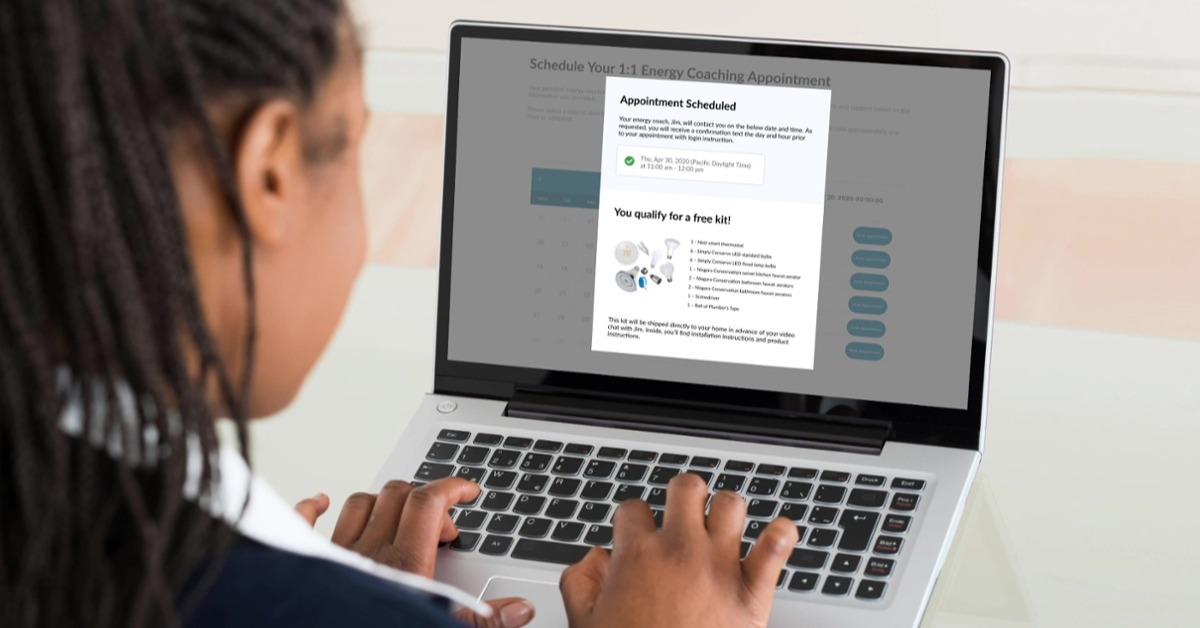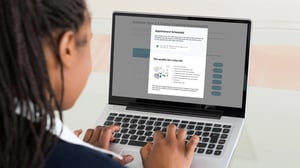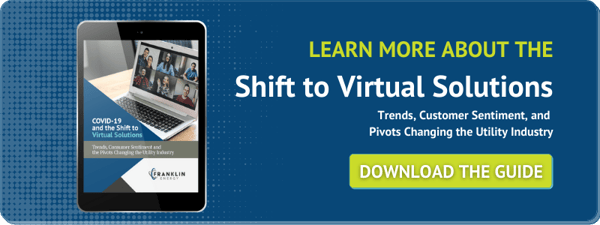Our 2025 Sustainability Report is here! Dive in.
Going Virtual with Home Energy Assessments, and Other Pandemic-Era Opportunities
August 2, 2021 •Franklin Energy

This article was originally published on Energy Central. Click here to read the article on Energy Central.
Even in the midst of a pandemic and nationwide lockdowns, utility customers nationwide demonstrated the important role utilities play within local communities. With an overwhelming number of households resorting to both remote work and online school environments, Americans spent $6 billion more on at-home energy usage during the height of the pandemic than the previous quarter. The surge in residential energy consumption, coupled with local government guidelines, forced utilities and implementation contractors alike to get more resourceful (read: more creative) with program delivery to meet the needs of a now touchless economy.
Cue virtual programming. With newfound agility and listening skills, plus an impressive amount of innovation, virtual energy assessments proved to be the key to helping U.S. households manage their energy usage and cut costs during an unpredictable time.
Now, with the worst of the pandemic behind us and most of the nation returning to business as usual, it would be easy to assume that virtual programming can be retired. But the lockdowns taught our nation some lessons that will change the way we do business even after COVID-19 is a distant memory.
Thanks to lowered business costs, remote employment is here to stay—and it’s bringing higher residential energy usage along with it. And you may (or may not) be surprised to learn that as many as 90% of utility customers still prefer a hands-off energy savings option, according to in depth user testing and nationwide studies. For many customers, in-person programs represent an extensive time commitment with solutions that feel overly complex. In this post-pandemic reality, customers simply don’t feel comfortable welcoming strangers into their homes, and many others don’t want to engage face-to-face.
A More Personalized Customer Experience

Virtual home energy assessments succeed by providing a streamlined engagement process, a personalized experience focused on the needs of the customer, and the ability to serve a larger overall market by offering a variety of ways to interact. Virtual assessments are quick to launch, take the guesswork out of participation, and go a long way in boosting customer satisfaction scores while garnering quick savings.
Virtual assessments that incorporate nurture campaigns and text-based support as a follow-up to video chat see higher energy savings, and because customers are more engaged in every part of the experience, virtual assessments provide an educational opportunity otherwise absent during in-home audits, leading to continued savings through behavior change. What’s more, virtual assessments are proving to be more cost-effective for the utility as well.
While it is true that virtual assessments can’t replace the value of in-person diagnostic testing and a full energy audit, it’s important to remember that virtual energy assessments have the ability to increase a utility’s engagement with a wider variety of customers. This includes those who work long hours and cannot accommodate an in-person assessment, those who do not want strangers in their homes, and those who simply prefer to avoid in-person interactions. Providing a new way for this audience to engage creates more opportunities for energy and monetary savings down the road.

Accessing Hard-to-Reach Customers
The hard-to-reach residential customers who were once considered “untouchable” because of location or scheduling, are now engaging in unexpected ways, and virtual assessments provide a way to build excitement, leading to participation in additional programs offered by their utility. And small businesses, who are too often time constrained as it is, are able to forgo an in-depth energy audit to more easily engage in a virtual assessment. With customer experience top-of-mind, the goodwill generated from a positive experience can lead to replacing lighting systems, thermostats, HVAC updates, system control enhancements, and more.
As the nation accelerates towards a net-zero economy, the need to reduce nationwide energy usage, and provide intuitive, engaging grid optimization programs is more relevant and critical than ever. In 2020, utility and energy productivity partners proved their agility, as well as their ability to listen, learn, and adapt.
If we can show the same type of empathy-driven innovation moving forward, we can deliver smarter energy solutions while building stronger local economies on the journey to decarbonization. That’s one outcome of the pandemic that even the most optimistic among us would not ever have imagined.


